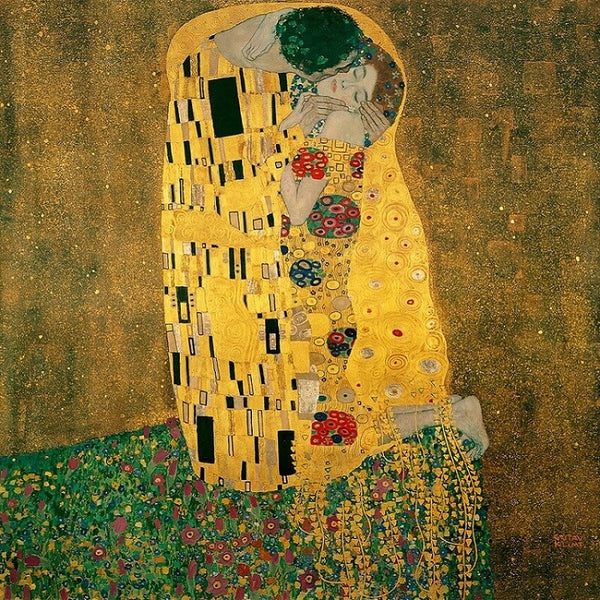Experience Travel Insights
The Gilded Cage: Theft, Justice, and the True Story of the Belvedere Woman in Gold
by Long Lin-Maurer • September 23, 2025

Beyond the Gilt: The Story of the Belvedere Woman in Gold
To stand before Gustav Klimt’s “Portrait of Adele Bloch-Bauer I” is to be arrested by a shimmer of pure gold. The canvas radiates a light that seems to emanate from within, a Byzantine mosaic of intricate patterns that coalesce into the form of a woman. Her elegant face and clasped hands emerge from the whirlwind of gold, her gaze both intimate and distant. Known by the title the Nazis gave it to obscure its origins—”The Woman in Gold”—this painting, once famously known as the Belvedere Woman in Gold, is far more than the crown jewel of Vienna’s Art Nouveau movement. It is a portal into a lost world, a testament to a family’s cultural patronage, a symbol of systematic Nazi art theft, and ultimately, a beacon of justice. To understand the Woman in Gold painting is to understand Vienna in all its brilliance and complexity.
Come and experience travel!
Personally designed, seamlessly delivered – your journey, our expertise!
We are a boutique travel agency and consultancy specializing in Hub & Spoke Tours across Central Europe, the Benelux and the Dolomites.
A Portrait of an Era: The World of Gustav Klimt’s Patrons
Before it was an icon or a famous restitution case, Adele Bloch-Bauer’s portrait was a private commission, a testament to the symbiotic relationship between a visionary artist and his patrons. The Vienna of the early 20th century was a crucible of modernity, where imperial traditions clashed with the revolutionary ideas of Freud and Mahler. At the heart of this ferment was an influential Jewish bourgeoisie who, barred from many paths to power, became the preeminent patrons of the avant-garde.
Among the most prominent were Ferdinand and Adele Bloch-Bauer. Ferdinand was a wealthy industrialist, but it was Adele who presided over one of the city’s most celebrated intellectual salons. She hosted the leading minds of the era, a self-educated, chain-smoking intellectual of formidable spirit. It was in this milieu that she and Ferdinand became devoted patrons of Gustav Klimt. Klimt was the renegade president of the Vienna Secession, an artistic movement that broke from staid traditions. The Bloch-Bauers embraced his radical vision, and the portrait of Adele, begun in 1903, was the apotheosis of this relationship and a masterpiece of Austrian art.
The Canvas as a Universe: Klimt’s Golden Portrait
Gustav Klimt’s “Golden Phase,” of which the Portrait of Adele Bloch-Bauer I is the most famous example, was inspired by the glittering gold mosaics of Ravenna, Italy. He began incorporating gold leaf onto his canvases, lifting his subjects from the mundane to the mythic. In Klimt’s golden portrait of Adele, this technique reaches its zenith. Her form is almost dissolved into a cosmos of symbols: Egyptian eyes, Mycenaean spirals, and cellular shapes. Her gown, a shimmering sheath of gold, is a universe of meaning, blending the erotic with the sacred, the ancient with the modern.
Yet, amidst this decorative splendor, Klimt anchors the painting in a profound humanity. Adele’s face and hands are rendered with delicate realism. Her dark, knowing eyes hold a touch of melancholy, and her hands are clasped in a peculiar gesture, perhaps to hide a disfigured finger—a touch of vulnerability. This tension between the divine gold and the fragile flesh gives the painting its enduring power. It is a portrait not just of a woman, but of an entire era’s opulent, yet anxious, psyche.
Theft and Deceit: The History of Klimt’s Dame in Gold
The world that nurtured this masterpiece was annihilated with the Anschluss of 1938. The Bloch-Bauer family was targeted; Ferdinand fled, stripped of his home and his priceless art collection. The Nazi regime engaged in institutionalized plunder of looted art, and Klimt’s Dame in Gold, as they cynically renamed it to erase its Jewish provenance, was a prime target. The name of the sitter was expunged from its history. After the war, through duplicitous claims, the artworks were not returned but were absorbed by the Austrian state. The Belvedere Woman in Gold was hung in the palace, where it was celebrated as a national treasure, an Austrian Mona Lisa. Its story of theft was buried, a convenient amnesia that allowed a post-war nation to distance itself from its past.
A Battle for Memory: Maria Altmann and the Restitution Case
The truth, however, endures. The story of the painting’s reclamation, a landmark restitution case, is a drama centered on Adele’s niece, Maria Altmann. Having fled Vienna, she settled in California. In the late 1990s, armed with evidence uncovered by journalist Hubertus Czernin, the elderly Maria Altmann began a legal battle to reclaim her family’s legacy.
Come and experience travel!
We design bespoke travel experiences with a perfect balance of cultural depth, efficiency and comfort.
Specializing in seamless hub-and-spoke journeys, we create well-paced, immersive itineraries tailored to your interests.
What followed was a David-and-Goliath struggle as Maria Altmann took on the Austrian Republic to reclaim the Woman in Gold painting. The case culminated in a landmark 2006 ruling that ordered Austria to return the art restitution masterpiece and four other Klimt works to their rightful heir. The decision sent shockwaves through the art world and forced Austria into a painful reckoning with its past. The return of the painting was an act of historical justice and a restoration of memory.
Today, the Portrait of Adele Bloch-Bauer I resides not in Vienna, but in the Neue Galerie in New York, where it was purchased by Ronald Lauder to be a centerpiece of his museum. Its journey from a private salon, to a wall in a national museum under a false identity, and finally to America, traces one of the most tumultuous chapters of 20th-century art history. To see the painting is to see staggering beauty. But to know its story is to understand that true heritage lies in a willingness to confront the entirety of the past.
Information on Belvedere’s “Woman in Gold”
- The Masterpiece Itself: Gustav Klimt’s “Portrait of Adele Bloch-Bauer I
Explore the iconic painting, its artistic details, and its creation by Klimt, now housed at the Neue Galerie New York. - Adele Bloch-Bauer: The Woman Behind the Gold
A biographical overview of Adele Bloch-Bauer, a prominent Viennese society figure and the sole model painted multiple times by Klimt. - The Plight of Looted Art: Context of Nazi Confiscation
Understand the systematic looting of art by the Nazis during World War II, a backdrop to the “Woman in Gold” story. - The Landmark Legal Battle: Altmann v. Republic of Austria
Delve into the details of the U.S. Supreme Court case that paved the way for the restitution of the Bloch-Bauer paintings. - Maria Altmann’s Enduring Fight for Justice
Learn about Maria Altmann, Adele’s niece, and her dedicated, decades-long pursuit to reclaim her family’s stolen artworks. - Belvedere’s Role in Austrian Restitution History
Examine the Belvedere Museum’s history regarding the Bloch-Bauer painting and its current comprehensive policy on art restitution. - “Woman in Gold” Film: A Cultural Phenomenon
Discover how the popular film brought the intricate story of the painting’s restitution to a global audience, raising public awareness. - Gustav Klimt and the Viennese Secession
Gain insight into the artistic world of Gustav Klimt and the groundbreaking Secession movement he led in Vienna. - Fin-de-Siècle Vienna: The Cultural Cradle of the Work
Explore the vibrant cultural and intellectual environment of turn-of-the-century Vienna, which profoundly shaped Klimt’s art and his patrons. - The Broader Context of Austrian Restitution Laws
Understand the development and application of Austrian laws concerning the restitution of art looted during the Nazi era.
